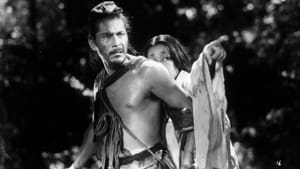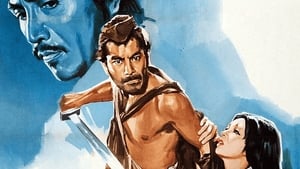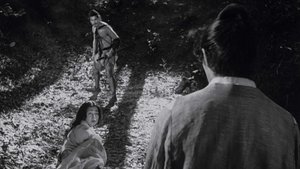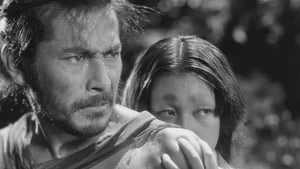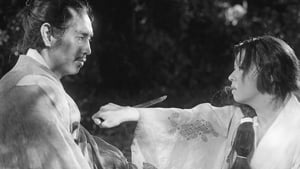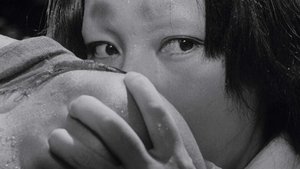Classic Movies in Color by AlwanFilm
Contact: [email protected]
Contact: [email protected]
Buy Rashomon Colorized for 14.99€
DOWNLOADS ONLY. NO DVDS.
Video Sources 0 Views

Synopsis
[ez-toc]





Introduction
In the realm of classic cinema, where black and white frames encapsulate the essence of a bygone era, emerges “Rashomon Colorized 1950” – a vibrant rendition of a timeless masterpiece. The very mention of Rashomon Colorized conjures images of the enigmatic tale directed by Akira Kurosawa. However, this version comes with a unique twist – the infusion of color, breathing new life into a narrative that has captivated audiences for decades. Embarking on this journey, we delve into the allure of watching old movies and how the infusion of color adds a contemporary layer to the cinematic experience. “Rashomon Colorized 1950” stands as a testament to the evolution of film, offering a bridge between the past and present, inviting audiences to rediscover a classic in a technicolor panorama.Read Media File Transfer Agreement: Terms and Conditions
Read FAQ
The Evolution of Colorized Movies
The art of colorization has traversed a tumultuous path throughout cinematic history. Initially met with skepticism and controversy, film colorization techniques have evolved to become a delicate craft, blending innovation with respect for the original. The process, while once seen as sacrilege, now opens avenues for a new generation to connect with the aesthetics of the past. The controversy surrounding colorization has become an integral part of its narrative, prompting discussions on the preservation of cinematic authenticity.Exploring Key Themes in “Rashomon Colorized 1950”
Drenched in a spectrum of hues, “Rashomon Colorized 1950” retains the thematic depth of its black and white predecessor. The film, set against the backdrop of a murder trial, weaves a tale of vanity and duplicity. Multiple perspectives unfold, revealing the inherent cynicism and selfishness within human nature. Masculinity, portrayed through conflicting characters, becomes a canvas on which the shades of shame and honor code are painted. The colorized version intensifies the emotional impact of the characters’ turmoil, making the audience question the boundaries between truth and deception. Each shade on the screen serves as a metaphor, enhancing the complexity of the story. The film’s exploration of these themes in a vivid palette creates an immersive experience, allowing viewers to witness the intricacies of the human psyche in a more profound way.The Visual Language of Color in Cinema
Color, in the realm of cinema, is a powerful tool for storytelling. In “Rashomon Colorized 1950,” the hues take on a symbolic role, guiding the audience through the labyrinth of perspectives. From the ominous reds symbolizing passion and guilt to the serene blues reflecting the complexities of morality, the visual language adds a layer of depth to Kurosawa’s masterful storytelling. The choice of color becomes a character in itself, influencing the narrative’s ebb and flow. In a sea of shades, the subtleties and nuances embedded in each frame serve as a testament to the meticulous craftsmanship involved in the colorization process. It is a symbiotic relationship between story and hue, where the colors enhance the narrative while the narrative breathes life into the colors.The Debate Over Colorizing Old Films
As we bask in the vivid beauty of “Rashomon Colorized 1950,” the debate surrounding the colorization of old films lingers. Purists argue for the preservation of the original black and white aesthetic, fearing that the integrity and historical value of these classics may be compromised. The question of whether colorization disrupts the director’s original vision remains a contentious issue. While colorization brings new audiences into the fold, there is an undeniable charm in the grainy allure of black and white cinematography. It captures an era where storytelling relied on the interplay of light and shadow, a visual language that some argue should remain untouched. “Rashomon Colorized 1950” becomes a battleground in this ongoing debate, where the clash between tradition and modernization plays out on the canvas of film history.Preserving and Appreciating Classic Cinema
Amidst the debate, it is crucial to emphasize the significance of preserving classic cinema in its original form. The black and white iterations of timeless movies are artifacts that encapsulate the aesthetics and storytelling techniques of a bygone era. Film preservation efforts play a pivotal role in ensuring that future generations can witness the raw, unaltered beauty of these cinematic gems. However, as we champion the cause of preservation, there is merit in acknowledging the role that colorization plays in introducing classic films to contemporary audiences. “Rashomon Colorized 1950” serves as a bridge, inviting a new generation to appreciate the narrative brilliance of Kurosawa while providing a fresh perspective on the age-old themes explored in the film.Final Thoughts
In the grand tapestry of cinema, “Rashomon Colorized 1950” emerges as a vibrant thread, connecting the old and the new. Its colorized canvas breathes life into a classic, allowing audiences to witness the intricacies of human nature through a different lens. As a film reviewer and editor, I encourage readers to embark on this cinematic journey, embracing the visual brilliance of the colorized version while also exploring the depths of the original black and white masterpiece. The allure of old movies lies not just in their narratives but also in the nostalgia they evoke. “Rashomon Colorized 1950” encapsulates this sentiment, beckoning audiences to appreciate the timeless artistry of a classic while embracing the evolution of cinema through the prism of color. It’s an invitation to unlock the spectrum of storytelling and immerse oneself in the rich tapestry of cinematic history. Original title Rashomon Colorized
IMDb Rating 8.2 175,578 votes
TMDb Rating 8.125 1,957 votes
Director
Director
Cast
Tajômaru
Masako
Woodcutter
Takehiro
Priest
Commoner
Medium
Policeman
